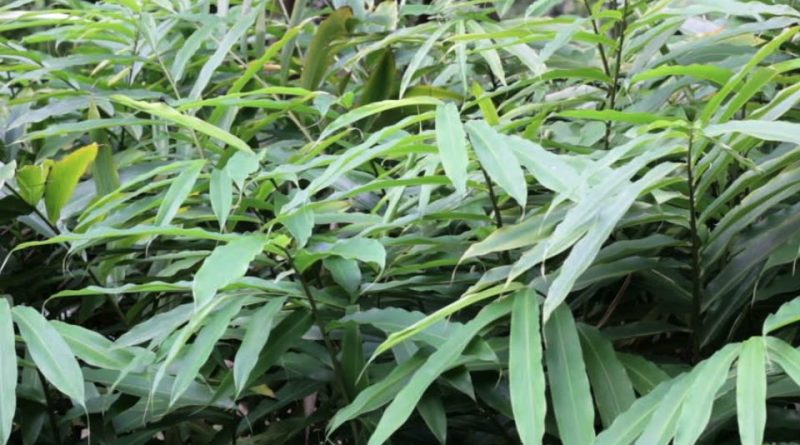Amomum xanthioides
Amomum xanthioides
The bastard Cardamom (Amomum xanthioides Wallich ex Baker) is a perennial herbaceous species belonging to the Zingiberaceae family.
Systematic –
From a systematic point of view, it belongs to the Eukaryota Domain, Plantae Kingdom, Magnoliophyta Division, Liliopsida Class, Zingiberales Order, Zingiberaceae Family, Alpinioideae Subfamily and therefore to the Genus Amomum and to the Species A. xanthioides.
The term is synonymous:
Amomum villosum Lour. var. xanthioides (Wallich ex Baker) T.L. Wu & S.J. Chen (1978).
Etymology –
The term Amomum comes from amomum, name of an oriental aromatic plant cited by Virgil from which a precious balm was extracted (from the Greek ἄμωμος ámomos irreproachable, perfect, derived from the privative prefix α- a- without and from μῶμος mómos blame, criticism).
The specific epithet xanthioides comes from the Greek ξανϑός xanto, yellow and from the Greek ὑοειδές, ioides, in form.
Geographical Distribution and Habitat –
Bastard Cardamom is a plant present and native to an area that includes southern China, Burma, Thailand, Laos, Cambodia, Vietnam, India.
Its habitat is that of forests where it grows at altitudes between 600 and 800 meters and usually on moist soils.
Description –
Bastard cardamom is a perennial herbaceous plant, with vigorous growth, which can reach 3 meters in height, characterized by a large rhizome.
The leaves are narrow, long, ovate-lanceolate, up to 40 cm × 9 cm.
The inflorescence is ascending, on a peduncle up to 8 cm long, with few flowers, with corolla slightly longer than the calyx, spoon-shaped labellum, almost circular and concave with an outcast, white apex with prominent central vein; the anther has a 3-lobed appendage with ear-shaped lateral lobes.
The fruit is 1.5-2 cm long, yellowish-green in color and covered with small spines.
Cultivation –
Amomum xanthioides is occasionally grown in countries like China and India where it prefers moist soils, subtropical climate, medium to high rainfall and light soils. It prefers places from semi-shaded to shaded.
It is a plant that propagates preferentially by division of the tufts starting from rhizome parts but can be reproduced starting from seed.
Uses and Traditions –
The bastard Cardamom, like other species of the same genus, is used both as a spice, as a condiment and for medicinal uses.
In traditional Chinese and Vietnamese medicine, the fruits are used to treat indigestion, diarrhea, flatulence, gastralgia, toothache and as a febrifuge and antiseptic.
Traditional Thai doctors also apply the fruit to treat cough, against asthma and as an antiemetic.
Both fruits and seeds stimulate appetite, relieve indigestion, nausea and vomiting; they are also considered useful both in cases of irritable bowel and during pregnancy.
This species has been used as a replacement for cardamoms, although its strong camphor flavor is not as pleasant.
Method of Preparation –
The bastard Cardamom is a plant used as a spice and seasoning especially in its countries of origin while it is much less known and used in the West. Medicinal uses are also closely related to the medical tractions of these countries.
Guido Bissanti
Sources
– Acta Plantarum – Flora of the Italian Regions.
– Wikipedia, the free encyclopedia.
– Treben M., 2000. Health from the Lord’s Pharmacy, Tips and experiences with medicinal herbs, Ennsthaler Editore
– Pignatti S., 1982. Flora of Italy, Edagricole, Bologna.
– Conti F., Abbate G., Alessandrini A., Blasi C. (edited by), 2005. An annotated checklist of the Italian vascular flora, Palombi Editore.
Warning: Pharmaceutical applications and alimurgical uses are indicated for information purposes only, they do not in any way represent a medical prescription; therefore, no responsibility is accepted for their use for healing, aesthetic or food purposes.


